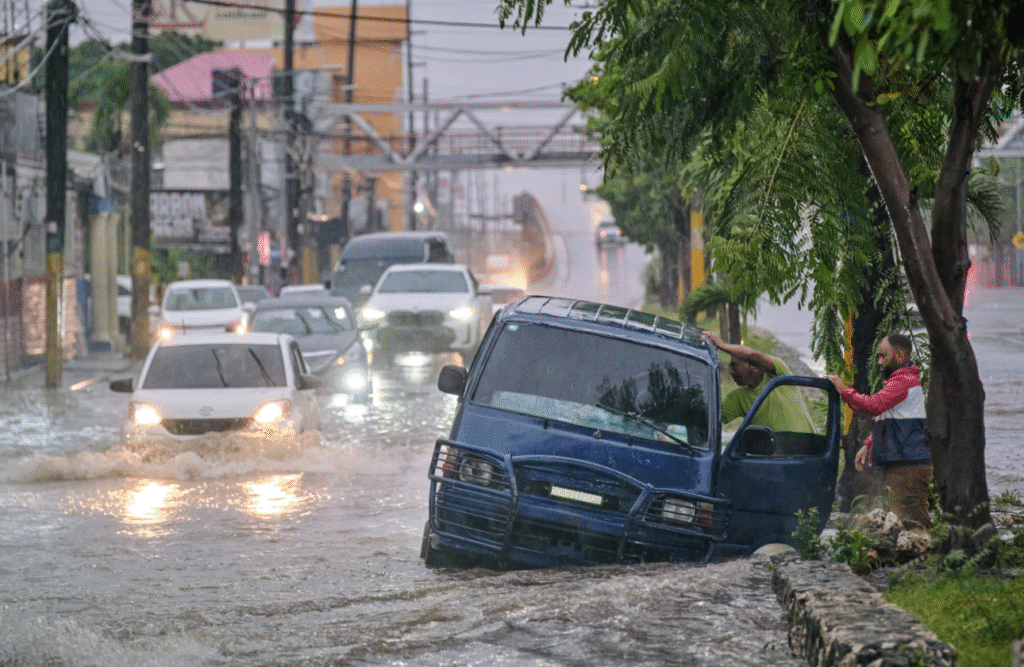Hurricane Melissa approaching Jamaica has intensified into one of the most powerful storms of the 2025 Atlantic hurricane season, leaving residents and authorities racing to prepare for its impact. The US National Hurricane Center (NHC) has warned that the storm could reach Category 5 strength as it barrels toward the Caribbean island, bringing torrential rainfall, deadly landslides, and dangerous storm surges.
At 06:00 GMT, Melissa’s winds were reported to be blowing at 120 mph (195 km/h), making it a high-end Category 4 hurricane with the potential to strengthen even further before landfall. Meteorologists predict that the storm will strike Jamaica by Tuesday, prompting widespread warnings across the Caribbean.

The Growing Power of Hurricane Melissa Approaching Jamaica
The NHC described Hurricane Melissa approaching Jamaica as “extremely dangerous,” cautioning that life-threatening flash floods, power outages, and infrastructure damage are inevitable. Rainfall totals could reach 30 inches (76 cm) in some areas, while storm surges are expected to rise as high as 13 feet (4 meters).
Officials have issued a clear message: “Seek shelter now.”
Although forecasters expect Melissa to slightly weaken to a Category 4 hurricane before reaching Jamaica, the difference in impact will be minimal. The NHC emphasized that “there is very little practical difference in the overall effects,” noting that Jamaica will still experience destructive winds and catastrophic flooding.
Jamaica Braces for Impact
Prime Minister Andrew Holness addressed the nation, urging citizens to prepare immediately for the arrival of Hurricane Melissa approaching Jamaica.
“I know that many Jamaicans are anxious and very concerned, and rightfully so. The best way to reduce that anxiety is through preparation,” Holness said during a televised statement.
Residents have been advised to secure their homes with sandbags, wooden boards, and other protective measures. Authorities are encouraging people to stock up on essentials such as food, water, medications, and flashlights.
Emergency shelters across the island have opened, and local disaster management teams are working around the clock to assist vulnerable communities.
Neighboring Islands on High Alert
The effects of Hurricane Melissa approaching Jamaica are already being felt beyond the island. In Haiti, where landslides triggered by heavy rains have claimed at least two lives, the government’s Civil Protection Agency has warned that more flooding is expected in the coming days.
Warnings have also been issued for the Dominican Republic, eastern Cuba, and parts of Haiti, including the capital Port-au-Prince. Meteorologists predict that the storm will move toward Cuba by Wednesday, where it may weaken slightly to a Category 3 hurricane but still cause widespread disruption.
Life-Threatening Flooding and Landslides
As Hurricane Melissa approaching Jamaica closes in, the NHC has stressed that the most dangerous effects will come from the heavy rainfall and resulting landslides. With the storm’s massive size, even regions far from the center could experience tropical storm-force winds and torrential downpours.
Authorities warn that central Jamaica, including Kingston, will face the brunt of the storm’s power. Roads are expected to flood, bridges could collapse, and communication networks may be disrupted.
The Meteorological Service of Jamaica has urged residents to complete their emergency preparations immediately, as “a multi-day period of damaging winds and heavy rainfall” is already underway.
The Science Behind Hurricane Melissa Approaching Jamaica
Experts note that while individual hurricanes cannot be directly attributed to climate change, global warming has made such storms more intense and unpredictable. Warmer ocean temperatures fuel the formation of tropical cyclones, providing them with the energy needed to grow stronger.
According to the US National Oceanic and Atmospheric Administration (NOAA), the 2025 Atlantic hurricane season was predicted to be “above normal” due to unusually warm sea surface temperatures and stronger monsoon activity around West Africa, where many Atlantic storms form.
Dr. Lauren Harper, a meteorologist at NOAA, explained:
“We’re seeing storms form faster and reach higher intensities than in previous decades. Hurricane Melissa is another stark reminder of how climate dynamics are evolving.”
Power Cuts and Infrastructure Damage Expected
With Hurricane Melissa approaching Jamaica, experts are warning of prolonged power outages across large portions of the island. The combination of high winds, falling trees, and flooding poses a severe risk to Jamaica’s power grid and communication lines.
Critical infrastructure—such as hospitals, airports, and water systems, is being fortified, while government officials coordinate with international partners to ensure emergency aid can be delivered quickly after the storm passes.
Several airlines have suspended flights to and from Jamaica, and cruise lines have rerouted ships to avoid the Caribbean Sea.
What Happens After Landfall?
Once Hurricane Melissa approaching Jamaica makes landfall, it is expected to move northwest across the island before passing over Cuba and heading into the open Atlantic Ocean. Forecasters predict that the system will weaken to a Category 3 by the time it leaves the Caribbean, but its heavy rainfall could still cause devastation along the way.
The storm’s remnants could bring rough seas and heavy rain to parts of the Bahamas and southern Florida later in the week.

The Global Perspective
The growing intensity of hurricanes like Hurricane Melissa approaching Jamaica highlights the urgent need for stronger climate resilience strategies in the Caribbean. Small island nations remain particularly vulnerable to extreme weather, facing immense challenges in rebuilding after each major storm.
International organizations such as the Red Cross, UNDP, and World Bank are closely monitoring the situation and preparing to provide assistance once the storm subsides.
Climate scientists stress that without immediate global action to curb emissions and strengthen infrastructure, the Caribbean could face even more destructive hurricane seasons in the years ahead.
Stay Informed and Stay Safe
The Jamaican government and disaster response agencies urge residents to stay tuned to official updates from the Office of Disaster Preparedness and Emergency Management (ODPEM) and the US National Hurricane Center.

